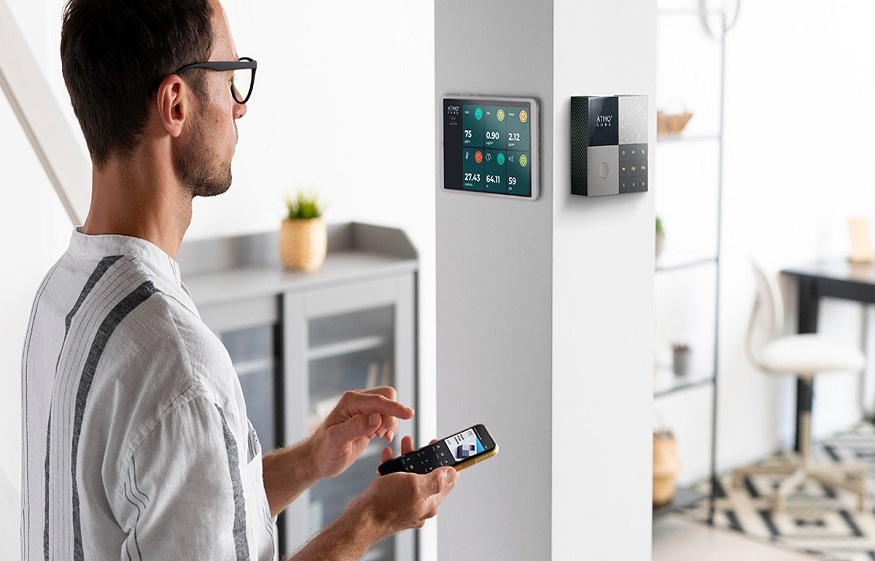
A growing number of homeowners are searching for methods to make their homes greener and healthier as awareness of sustainability and environmental effects increases. Maintaining ideal indoor air quality is essential to reaching this. An air quality monitor is necessary in this attempt since it provides information that can enhance your home’s overall health and environmental impact. This is how making your home greener may be accomplished with an air quality monitor.
Tracking Indoor Pollutant
An air quality monitor makes tracking and identifying different indoor pollutants, like particle matter, carbon dioxide (CO2), and volatile organic compounds (VOCs) easier. The monitor assists you in understanding the sources and quantities of these pollutants in your house by identifying them. For example, higher CO2 levels may suggest inadequate ventilation, whereas high VOC levels may originate from furniture or other home goods. By recognising these contaminants and taking proactive steps to limit them, you can support your green living objectives and create a healthier indoor environment.
Maximising Airflow
Maintaining a healthy interior air quality and ensuring that contaminants are appropriately controlled depends on adequate ventilation. Real-time CO2 data from an air quality monitor might indicate whether your home has enough ventilation. Inadequate ventilation can potentially increase indoor pollution concentrations and make a home less environmentally friendly. Enhancing air quality and promoting energy efficiency—two essential components of a green home—you may optimise ventilation by utilising the monitor’s data to change ventilation systems or increase airflow.
Consumption of Energy is Reduced
Developing a green home frequently entails figuring out how to use less energy. This is made more accessible by the information an air quality monitor offers on the relationship between indoor air quality and energy consumption. For instance, you may need to strengthen insulation or change settings if elevated CO2 levels suggest that your ventilation system is operating more intensively than necessary to increase system efficiency. Monitoring humidity levels also helps you better control your heating and cooling system, keeping your house pleasant without too much energy.
Improving Comfort Indoors
Not only can a greener home minimise its impact on the environment, but it may also be a comfortable place to live. An air quality monitor enhances your comfort level indoors by assisting you in controlling variables like humidity, temperature, and pollution levels. For instance, preserving ideal humidity levels helps stop dust mites and mould growth, which can lower indoor air quality and comfort. You may improve your living space by using the information from your air quality monitor to make well-informed changes that will make it healthier and more pleasurable overall.
Encouragement of Sustainable Practices
One way to promote several sustainable behaviours in your green home approach is to incorporate an air quality monitor. By assisting you in locating and reducing indoor pollution sources, the monitor can lower the frequency at which cleaning supplies are needed and increase the effectiveness of air purification systems. Additionally, you enhance the durability and effectiveness of your home’s systems and ultimately encourage a more sustainable lifestyle by encouraging improved ventilation and humidity management.
Conclusion
An air quality monitor is a useful tool when attempting to make your house greener. The monitor assists you in creating a better and greener living environment by monitoring indoor pollutants, improving ventilation, cutting energy use, raising indoor comfort levels, and encouraging sustainable practices. Adding this technology to your house not only enhances the air quality but also supports your larger objectives of sustainability and environmentally friendly living.

